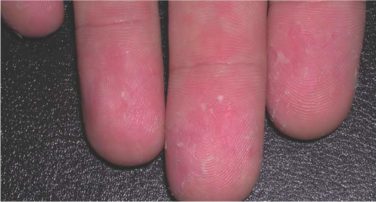AT EHA 2017
MADRID (FRONTLINE MEDICAL NEWS) – A combination of the BCL-2 inhibitor venetoclax with a hypomethylating agent may produce high overall response rates among older patients with newly diagnosed acute myeloid leukemia (AML), early data showed.
Among 100 patients age 65 years and older with previously untreated AML, the combination of venetoclax with either decitabine or azacitidine was associated with a 69% overall responses rate, reported Keith W. Pratz, MD , of Johns Hopkins University in Baltimore.
“Venetoclax, when combined with decitabine or azacitidine, has a tolerable safety profile in treatment-naive elderly patients with AML,” he said at the annual congress of the European Hematology Association.
The standard AML induction regimen of cytarabine and an anthracycline with or without cladribine is generally too toxic for patients in their mid-60s or older. For these patients, there are few good therapeutic options, Dr. Pratz said.
Venetoclax has shown good single-agent activity against relapsed/refractory AML and, as reported in a phase 1b study at the 2016 annual meeting of the American Society of Clinical Oncology, induced a combined rate of complete remission (CR) and CR with incomplete marrow recovery (CRi) of 60% when given in escalating doses with a hypomethylating agent.
Dr. Pratz reported on response rates and safety from an expansion cohort of patients 65 years and older treated in that phase 1b study. The patients were treated with either decitabine or azacitidine plus venetoclax at a dose of either 400 mg or 800 mg.
Decitabine was dosed at 20 mg/m2 intravenously on days 1-5 of a 28-day cycle. Azacitidine was dosed at 75 mg/m2 subcutaneously on days 1-7 of every cycle.
The ORRs for each arm were as follows:
The combined CR/CRi rate was 60% among patients with poor-risk cytogenetics and 78% among patients with intermediate-risk disease. In addition, the combination was effective among patients with both primary de novo AML (68%) and secondary AML (related to myelodysplasia or myeloproliferative neoplasms or previous therapy; 73%).
Overall survival after a median of 9 months since the first dose of the study drug was estimated to be 79% at 6 months and 70% at 12 months, with the median not reached.
Treatment-related adverse events were similar between the decitabine- and azacitidine-containing arms at the given dose of venetoclax. Grade 3 or 4 treatment-related adverse events included thrombocytopenia in 56% of patients on the 400-mg dose of venetoclax and in 32% of those on the 800-mg dose. Grade 3/4 febrile neutropenia occurred in 48% and 30%, respectively, and neutropenia in 40% and 32%.
A phase 3 study of venetoclax at the 400-mg dose with azacitidine has been initiated. NCT02993523 is currently enrolling patients, Dr. Pratz said.
The study was supported by Abbvie and Genentech. Dr. Pratz disclosed research funding from Abbvie and other companies.




